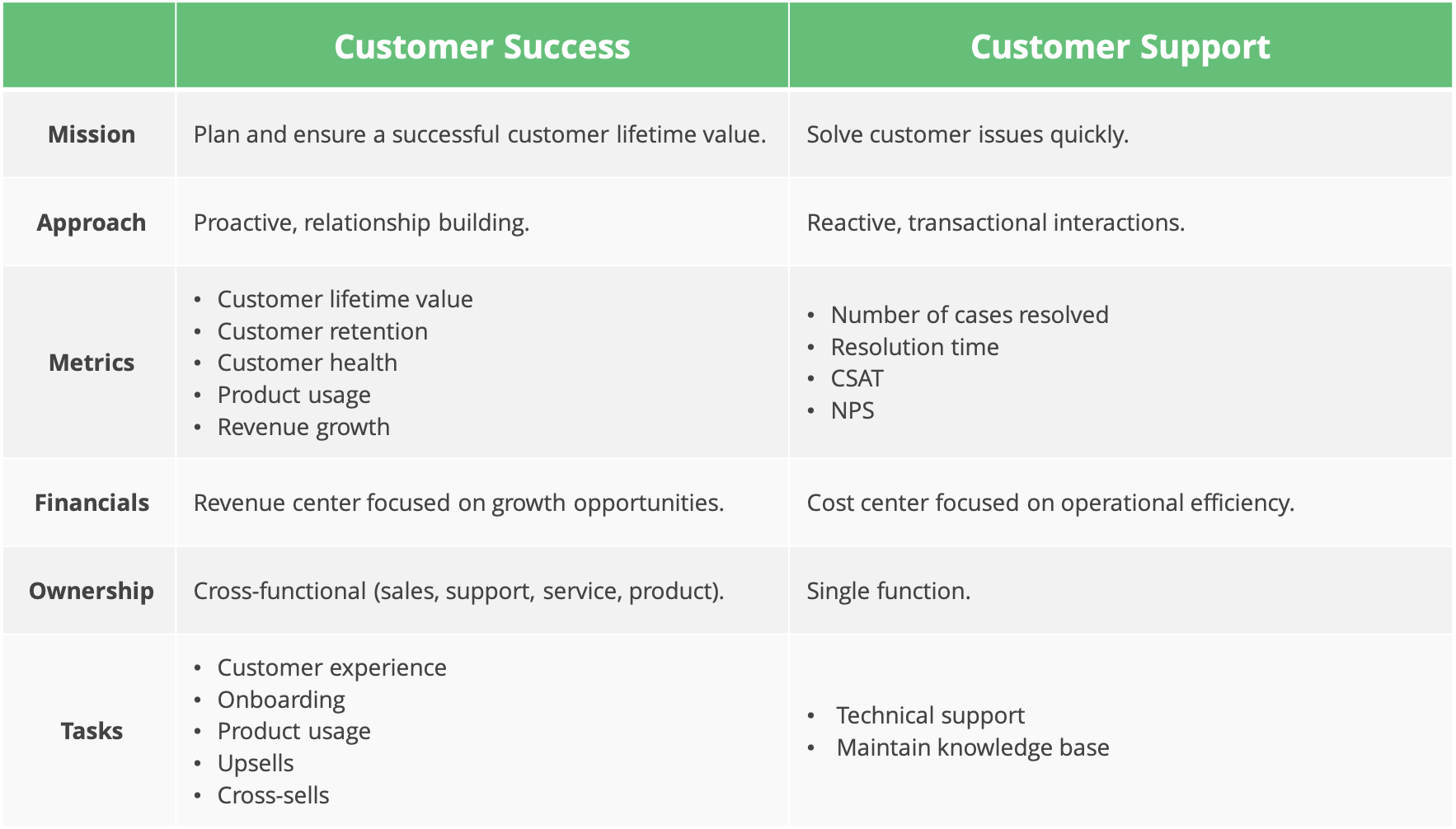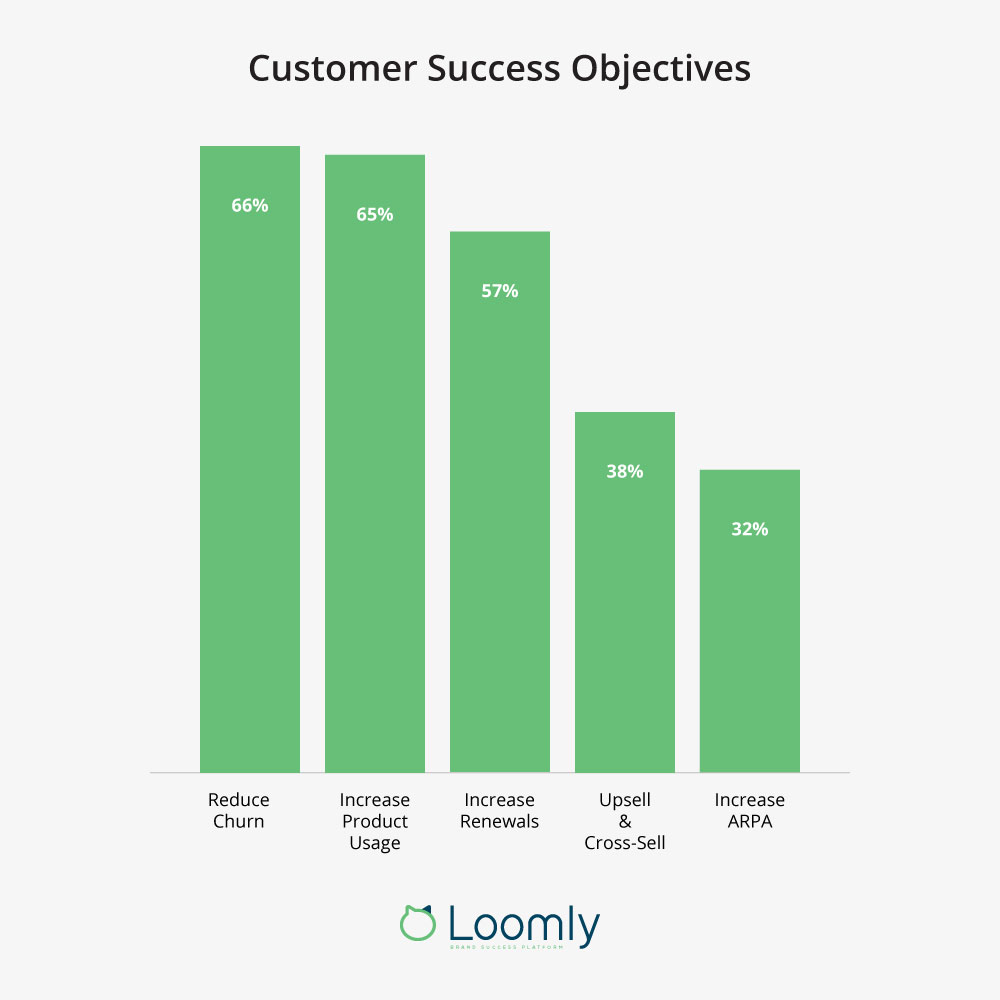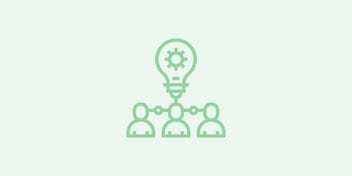An Introductory Playbook to Customer Success
Customer success is one of the most popular buzzwords in business, especially among SaaS companies.
But it’s not just a fad. In fact, it can be the difference between success and failure.
Companies who want continued growth realize they have to nurture and retain their existing customers rather than continually chasing new leads. And that’s why they’ve embraced the concept of customer success.
In this guide, we’ll look at what customer success is, how it differs from customer support, and why your business needs it. Then we’ll take a look at how you can implement an effective customer success strategy to grow your brand.
Let’s get started!

Manage all your social media accounts in one place.
Craft, schedule, & auto-post content to all your social channels, then track analytics and manage interactions from a single, easy-to-use dashboard.
What is Customer Success?
Customer success is the ensemble of processes implemented to maximize the odds of a new customer achieving their desired outcome when purchasing and using a given product or service.
Typically, it includes a wide array of actions and resources made available to the customer, including user manuals, tutorials, educational content, setup services, onboarding, support, and satisfaction surveys.
The underlying principle is that a customer who is successful using a product or service is likely to keep using it, plus investing more in it, resulting in higher transaction values and repeat business.
However, it’s important to note that customer success comes not only from providing value to customers but also providing an experience that is meaningful to them.
Customer Success vs Customer Support
Customer success is closely related to customer support, but they have different aims and goals.
Customer Success
Customer success works proactively with customers to help them get the maximum value out of your product or service. It drives the customer experience forward and aims to increase revenue through cross-sells and upsells.
Customer success doesn’t have an “endpoint”. It’s an ongoing process to build the relationship between the customer and the company.
Customer Support
Customer support works reactively to customer questions, issues, and requests about your product or service. It uses live chat, email, phone, and social media to resolve problems when customers raise them.
In general, customer support interactions are transactional – they begin when a customer reports an issue, and end with a resolution to their request. Although, over time, customers can develop relationships with support staff in more specialized areas such as enterprise software.

A key weapon in the customer success team’s arsenal is marketing automation: let’s dive deeper into this aspect of the function.
Customer Success and Marketing Automation
Here are seven ways customer success teams can take advantage of marketing automation to monitor customer health and target the highest priority accounts.
1. Onboard your customers
During the onboarding process, you could use automated triggers to proactively advise customers of the next steps based on their activity and how quickly they’re moving through the process. Or if they’re stuck, you could send a “wake up” nudge.
2. Help customers self-serve
Customers don’t always require direct contact with your success team. You could create automations that make it easy for customers to progress on their own.
3. Monitor which customers are in danger of churning
You need to monitor when accounts are at risk and act proactively before a customer leaves. You could use contact scoring, engagement tagging, and pipeline automation to track which customers are in danger of churning.
4. Identify high-priority accounts
You can track customer health and account information to funnel resources to the highest priority accounts quickly. For example, you could check which customers are reporting more problems to see if they require additional training.
5. Collect customer feedback
You can use Net Promoter Score (NPS) surveys to analyze changes in customer scores and behavior towards your product or service. Again, this could highlight the customers you need to prioritize.
6. Send personalized messages
You can personalize emails and messages to match each customer’s details and needs. And, using behavior and time-based triggers, you can customize the timing of your messages, and sender information, to make each interaction feel more personal.
7. Manage your success team
Using automation, you can manage and assign tasks based on customer health checks and product usage to make sure no customers get missed and keep your team updated.
Why Customer Success is Key for Your Business
Customer success is one of the most popular ways to achieve business growth with higher conversion rates, larger average order value, increased retention rates, more referrals, and improved lifetime value.
Customer success brings you:
Higher conversion rates
An established customer success program will highlight the profile of the best-fit customers for your brand. Your product/service won’t suit everyone, but if you focus on the best-fit prospects, then you’ll increase customer conversion rates.
A better onboarding experience can double your trial to paid conversion rates.
Larger average order value
Customer success programs provide more opportunities for you to interact and communicate with your customers. As you develop these relationships, it’s easier to upsell and cross-sell premium products to bring them more success and increase your average order value.
Increased retention rates
Retaining customers is less expensive than acquiring new ones:
- Acquiring new customers is up to 25 times more expensive than retaining existing ones.
- Increasing customer retention rates by 5% can drive profits up by 25% to 95%.
A robust customer success program ensures your customers are happy and not looking to move to one of your competitors at renewal time. So you can reduce churn and decrease your acquisition costs.
Additional referrals
Customers who enjoy success with your product or service will be more than happy to refer you to friends and peers.
- 84% of B2B buyers start the purchasing process with a referral.
- 90% of B2B buying decisions are influenced by peer recommendations.
- Companies with a formalized referral program experience 86% more revenue growth on average over a two-year period.
Every customer interaction is an opportunity to turn customers into advocates.
Improved Customer Lifetime Value (CLV)
Relationships built through a customer success program lead to more sales. And the more purchases a customer makes, the more their CLV increases.
For example, if a customer buys twice from a business, spending $50 each time, and the gross profit margin rate of the company is 70%, then the customer lifetime value is ($50 + $50) x 70% = $70.
Put simply: customer success drives brand success and business success.
How to Implement an Effective Customer Success Strategy
Now we’ve considered what customer success is and why it’s vital for your business, let’s look at how you could implement your strategy.
Customer Success Team
The customer success team contains the people who make things happen following the process and using the software below.
It’s their job to make sure that all customers are fully engaged and getting the value they expect from your product or service. Using various tools and resources like on-boarding and training, they ensure each customer has the best possible experience.
The customer success team is a cross-functional team involving people from across the business. Depending on the size and organization of your business, they might report to the Chief Revenue Officer, the Chief Customer Officer, the Head of Sales, or the CEO.
According to a 2019 survey by Feedier:
- 37% of customer success teams exist as stand-alone business units that report directly to the CEO.
- 14% of customer success teams are subdivisions of Marketing or Sales departments (i.e. integrated across teams).
Ultimately, the customer success manager has to share and implement the strategy with your team, and ensure everyone knows what’s expected of them individually and as a unit.
Customer Success Process
The customer success process will vary depending on your product or service and customer expectations, but here are a few general steps.
1. Start with the end goal
It’s essential to establish what success looks like for you and your customers. What do both parties want to achieve?
2. Develop a roadmap
Create a roadmap to explain your brand’s expectations and goals for customer success in the short and long-term. For example, you might ask:
- What’s the desired outcome at each step in the customer’s journey?
- What would benefit the customer most at each step?
- At what point does your product or service fall short?
- At what point could your competitors influence your customers?
- How will you track customers who are unhappy with their progress in the customer’s journey?
3. Create a communication plan
You’ll also want to consider how your customer success team will communicate with customers. Will it be on a 1-2-1 basis with a nominated customer success representative, or will you use different people for each activity?
4. Establish your metrics
Before starting, you’ll need to establish your customer success metrics so you can evaluate if the program is working for you and your customers.
You’ll want a combination of quantitative measures, like Customer Lifetime Value (CLV) and lower acquisition costs, and qualitative scores, like NPS surveys and customer feedback.
In Feedier’s survey, over 73% of respondents said they used more than 2 metrics from the top five:
- Churn rate
- Expansion revenue
- Net Promoter Score (NPS)
- Retention rate
- Customer satisfaction (CSAT)
In a survey of SaaS companies with customer success programs in place, Regalix found that reducing churn was the number one priority:
- 66% – Reduce churn
- 65% – Increase product usage
- 57% – Increase renewals
- 38% – Upsell and cross-sell
- 32% – Increase average revenue from each customer

5. Implement continuous improvement
Make sure you implement a feedback loop that actively seeks questions and suggestions from customers and passively measures key metrics, such as usage, satisfaction, and affinity, to fine-tune operations step-by-step and overlap as closely as possible with customer expectations.
6. Make one change at a time
When you do make changes to your customer success program, make them one at a time so that you can review the impact.
Customer Success Software
Companies use customer success software to help their teams foster and monitor customer relationships, track key performance indicators, and alert them to potential issues and opportunities.
Here are some of the leading customer success platforms and tools with their key features.
Customer Success Platforms
Customer success platforms help you manage the customer success journey with data analytics, user touchpoints (especially in-app), and deep segmentation capabilities.
Gainsight – Customer lifecycle management across segments and throughout the customer journey with data analytics and high-tech and high-touch engagement points.
UserIQ – Data integration across product, customer success, and sales and marketing teams, digital user engagement, and in-depth segmentation based on NPS surveys and product usage.
ChurnZero – Customer engagement tracking, customer intelligence, user segmentation, product interaction, and implementation of automated tasks.
Customer Success Tools
Customer success tools can bridge a specific gap in your tech stack for a particular task.
Drift – Live chat for websites with lead intelligence.
Intercom – High-tech and high-touch engagement with customers across channels, including website, in-app, and email, with targeted messaging.
Churn Buster – Professional dunning platform optimized to increase failed payment recovery and decrease churn.
As functionality varies from one solution to another, you’ll need to choose the software that best suits your customer success team.
Customer Success in a Nutshell
Customer success is not a short-term strategy. It may involve reshaping and refocusing your business so you can provide the best possible value and experience for each customer.
However, those customers who use your product or service successfully are likely to keep using it, plus invest more in it, which has enormous benefits for your business in the long-run, including improved conversion rates, larger average order value, increased retention rates, more referrals, and better customer lifetime value.



